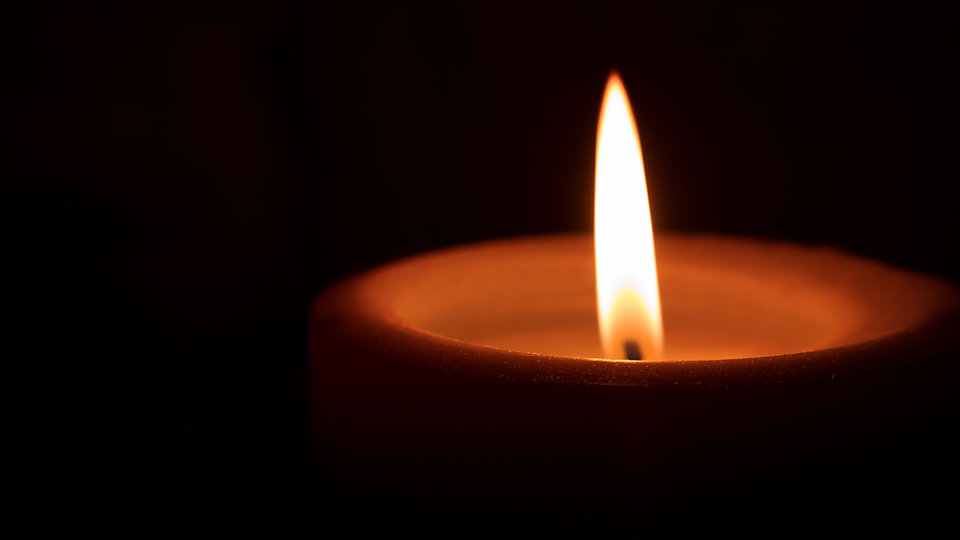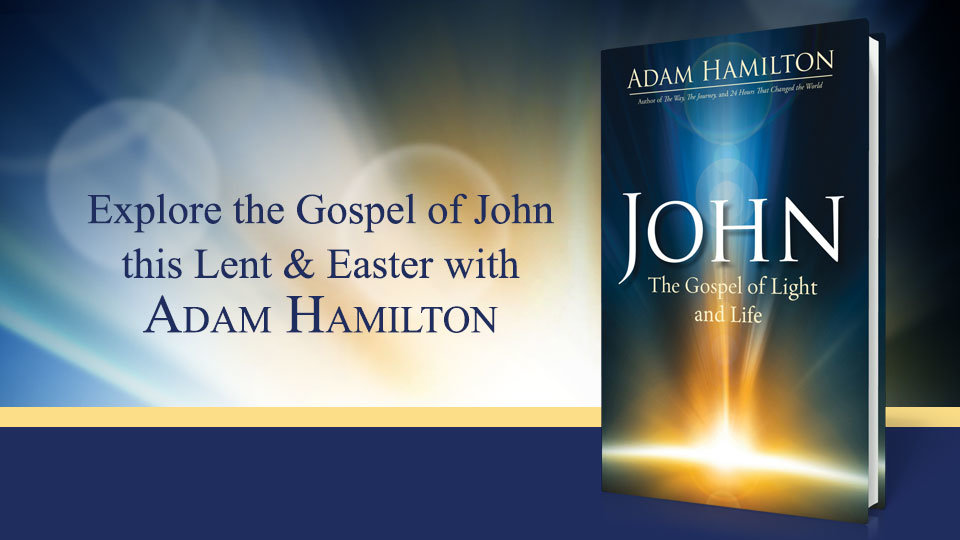Take the Challenge to Read Through John This Lenten Season
So many people “give up” things for Lent: sweets, sodas, favorite TV shows. How about “taking on” something new this year?
Join me in establishing a new habit—reading through a Gospel each year. The Lenten season is the perfect time to read through the Gospel of John. We’ll get started on Ash Wednesday on February 10 and read together for 40 days.
To guide you through John, I’ve written a new book, John: The Gospel of Light and Life. This book is divided into 6 chapters to help you explore the major themes of the Gospel and is meant to be read alongside the Scripture.
With that in mind, the entire text of John is included. At the end of each chapter you’ll find a portion of the Gospel, and if you read each portion after you read the chapter, by the end of the book you will have completed the Gospel of John.
I’m also encouraging congregations to begin preparing now for the Lenten season. I believe that when an entire church reads through the Gospel of John together during Lent they will find the light and life John’s gospel promises.
We have created several resources to help you and your church as you read through the Gospel of John. You can find those here.
Today’s post is an excerpt from Chapter Three, “The ‘I AM’ Sayings of Jesus” in John: The Gospel of Light and Life.
Jesus’ Words, “I Am The Light of The World”
John’s gospel records a number of “I Am” sayings of Jesus. Among the best known, and one we marked by candlelight at Christmas Eve is this one, “Jesus spoke to the people again, saying, ‘I am the light of the world. Whoever follows me won’t walk in darkness but will have the light of life’” (John 8:12).
The context of this passage may be important in appreciating the statement. We read in John 7 that Jesus went to Jerusalem for the Festival of Sukkot. Sukkot is a Hebrew word meaning huts or booths; hence, the celebration is often called the Festival of Booths.
This is a fall harvest festival in which the people erected (and Jews to this day continue to erect) tents (or temporary outside structures) to remember Israel’s forty years of wandering in the wilderness, a time in which the people lived in tents or “booths.”
The forty-year period is described in the Book of Exodus: “The Lord [Yahweh] went in front of them during the day in a column of cloud to guide them and at night in a column of lightning to give them light. This way they could travel during the day and at night” (Exodus 13:21).
In the time of Jesus, on the first night of the Festival of Sukkot, four giant lampstands seventy-five feet tall, each with four golden bowls at the top, were erected in the Court of the Women at the Temple. The bowls were filled with oil, and multiple wicks made of fabric were inserted into the bowls and lit. It was said that the light from these lampstands dramatically illuminated Jerusalem. These lamps were visible reminders of the column of light by which God guided the Israelites and reassured them as they sojourned in the wilderness.
It was at this festival, in the Temple courts where the lampstands stood, that Jesus made this “I AM” saying: “I am the light of the world. Whoever follows me won’t walk in darkness but will have the light of life.” In framing the story this way, John wants us to understand that Jesus came to guide those who believe in him through the darkness. He came to dispel the darkness. He came to be our light in the midst of the darkness.
This “I AM” saying draws upon so many Old Testament Scriptures. We can find 180 or more references to light in the Old Testament, many of which may have been behind Jesus’ “light of the world” statement. Psalm 27:1 proclaims, “The Lord [Yahweh] is my light and my salvation. Should I fear anyone?” In Psalm 104:2, the psalmist sings to God, “You wear light like a robe.”
The prophets repeatedly speak of God bringing light to the people, as with the memorable words of Isaiah 9:2: “The people walking in darkness have seen a great light. On those living in a pitch-dark land, light has dawned.” The early church saw in this passage a prophetic word about Jesus. Isaiah 60:19 points to a time when “the sun will no longer be your light by day, nor will the moon shine for illumination by night; the Lord will be your everlasting light; your God will be your glory.”
Both in Scripture and in literature from the Dead Sea Scrolls, written just before the time of Christ, we find that themes of darkness and light were prominent in Judaism. Darkness represents spiritual blindness, lostness, and also evil. In John, when we believe in Jesus our eyes are opened, and suddenly we see ourselves and the world in his light.
In the Synoptic Gospels, the light metaphor shifts. Jesus does not say, “I am the light of the world” but instead says to his disciples, “You are the light of the world. A city on top of a hill can’t be hidden. . . . Let your light shine before people, so they can see the good things you do and praise your Father who is in heaven” (Matthew 5:14, 16).
Both statements are true, and at our Christmas Eve candlelight services, we always link the two together. We light the Christ candle in the midst of the darkened room, showing that Jesus is the light of the world. Then we take the Christ candle and light all our candles from it, signifying that our lives have received the light of Christ. In doing so, we remember that we are called to leave the candlelight service and take the light of Christ to others.
To find out more about the light Christ brings, and to explore the other “I Am” sayings of Jesus in John’s gospel, check out John: The Gospel of Light and Life and read the Gospel of John this Lent.





Comments
blog comments powered by Disqus